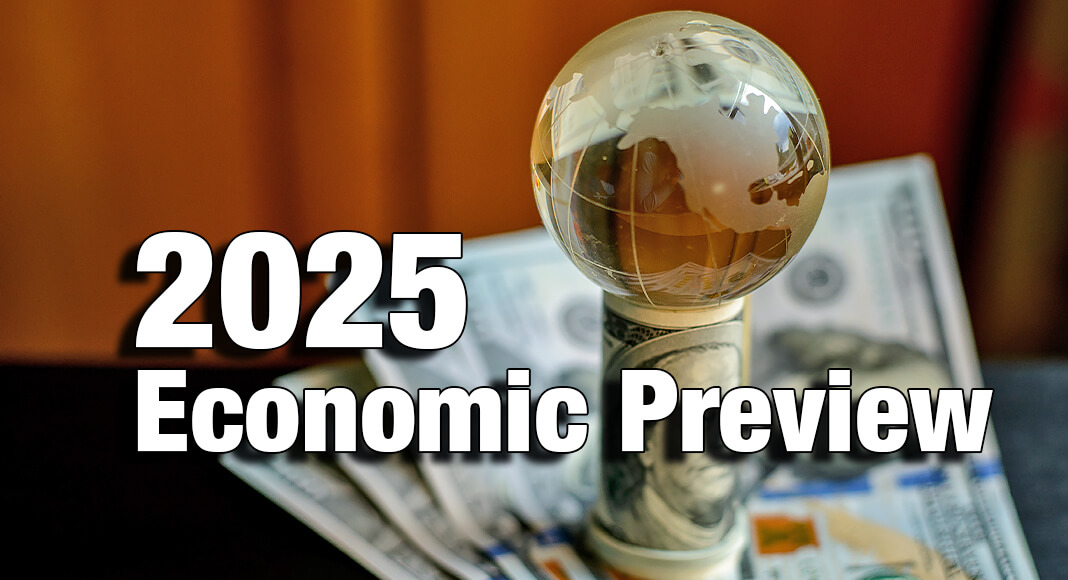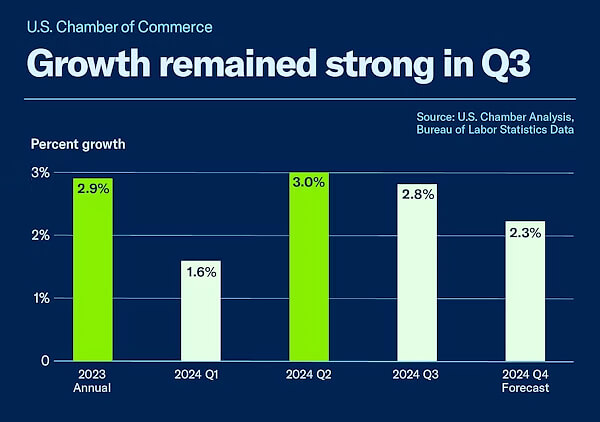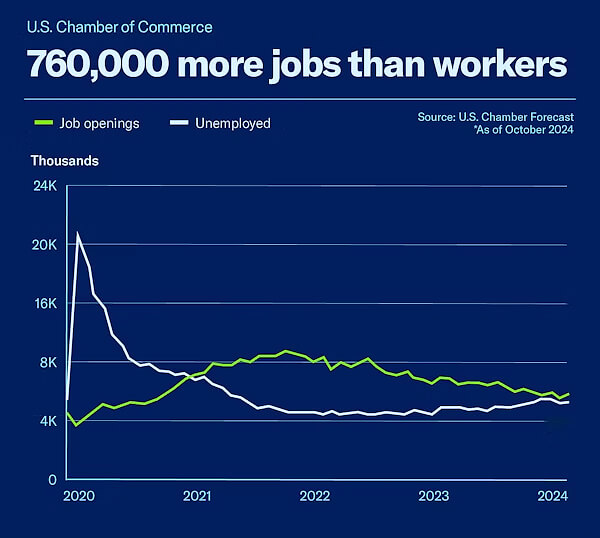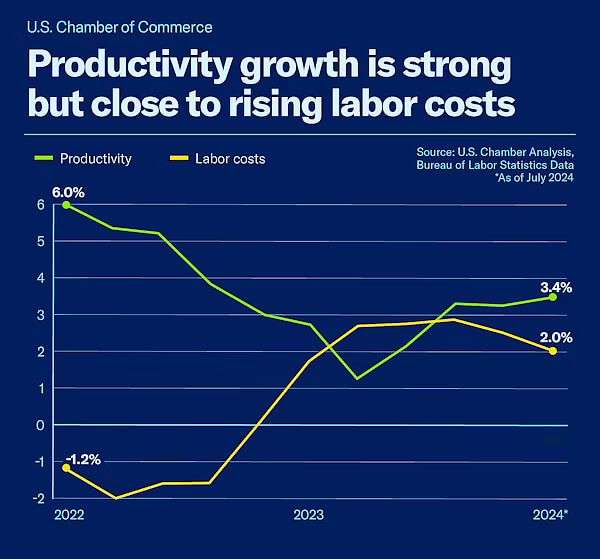
Texas Border Business
Curtis Dubay
Chief Economist, U.S Chamber of Commerce
Barring an unforeseeable event, the economy should grow even better in 2025 than it did in 2023 and 2024, which means a growth rate above 3% with the gains being broadly enjoyed. This will contribute to more opportunities for workers and businesses to reach their American Dream.
As 2024 winds down, the economy is growing strongly.
The economy expanded at 3% and 2.8% in the second and third quarters, respectively, and it is tracking to grow over 3% for the fourth quarter. If that holds, the economy will grow around 3% again in 2024.
ost other countries, including those that are highly developed and industrialized, are growing slower than the U.S. economy. They would love to get even close to a 3% growth rate.
Why Growth Matters

What’s more, this type of sustained growth creates opportunities for increased investment, wages, and opportunities for American businesses and workers. That’s why the Chamber is calling for a national priority for growth, driven by people through innovation and productivity and fostered through sound public policy that will help us reach and sustain 3% annual real economic growth.
- When our economy is growing at 3%, someone who is born today will see America’s economy double in size by the time they are in their early 20s.
At 2% growth, it will take until they are in their mid-30s for the economy to double.
How Jobs and Consumer Spending Have Spurred Economic Growth

The growth we’ve seen in the last few years has been driven by consumer spending. Consumers are fueling their buying from their wages, which have grown faster than inflation since the middle of 2023. This has allowed them to spend above still-high inflation.
Consumers are able to earn strong wages because the U.S. has a worker shortage that pushes wages up as businesses compete to attract and retain workers.
America’s aging population is one factor contributing to the worker shortage. Older Americans are aging out of the workforce and retiring, while younger generations are having fewer children. Plus, the labor force participation rate has been trending downward for more than 20 years. These trends are contributing to a shrinking workforce.
In fact, we are in an unprecedented situation where the number of job openings is greater than the number of available workers in the economy. As of the end of October, the latest available date, there were 760,000 more job openings and available workers. Prior to the COVID pandemic, there were always more unemployed workers than job openings. That has flipped now and will likely remain the case for the foreseeable future.
As long as businesses remain short of workers, jobs will remain plentiful and pay well. This will allow consumers to spend at a high level.
This virtuous cycle can continue as long as the worker shortage remains. And there is no relief in sight, either from increased immigration or higher birth rates.
Productivity Will Drive Growth in 2025

Looking to 2025, labor market conditions alone will cause the economy to grow as strongly as it has in the last few years. However, we expect it to grow even stronger.
One part is inflation will continue to fall to the Fed’s 2% target rate, which will bring down interest rates.
But the key to faster economic growth will come from productivity gains.
Productivity–producing more goods and services with the same amount of labor and capital–is the glue that holds together the virtuous cycle of economic progress. Businesses can only hire workers if those workers make the business money. Sharply improved worker productivity helps companies afford the higher wages workers are earning.
Additionally, employee pay has risen sharply enough in the U.S. that it has grown at roughly the same pace as increasing productivity. This means that businesses still have reason to bring them on board and keep them, even if it is by a narrow margin.

Productivity was declining in the years immediately after the pandemic. Since the beginning of 2023, it has been rising, growing close to or above 3% each quarter.
The jump in productivity is largely a U.S. phenomenon, and we are far outpacing other developed countries.
Christine Legarde, the head of the European Central Bank (Europe’s Fed) said recently that “productivity in the European economic zone has increased 0.6% since the end of COVID. It has increased 6% in the U.S.”
While no one knows the exact cause of the rise in productivity, there are a few main drivers.
- Reskilling and Worker Shortages: Productivity gains have come from workers moving into positions that are more value-adding, either because they reskilled during the pandemic or businesses are hiring them even if they don’t have all the required skills for the position.
- Immigration: The influx of workers via legal immigration has contributed to increased productivity, because we were so short of workers in the aftermath of COVID.
- Automation: Automation and mechanization are paying big productivity dividends as well.
AI to Contribute to Boost in Productivity
Gains from artificial intelligence (AI) could cause productivity to soar above expectations next year.
The surge in productivity in the last few years pre-dates the introduction of AI. While we have had years to integrate automation technology and are finally seeing the economic gains from that evolution, the economic efficiency brought on by AI hasn’t really kicked off yet.
In 2025, we can expect businesses across the economy to better integrate AI into their processes. They are going to have no other choice because they will remain short of workers.
AI will make their current workers more productive than they already are. This will boost growth even further and allow businesses to continue paying high wages, all while expanding their profit margins (as long as wage gain remains at current levels). That’s a win-win-win.
Information source: US Chamber of Commerce












